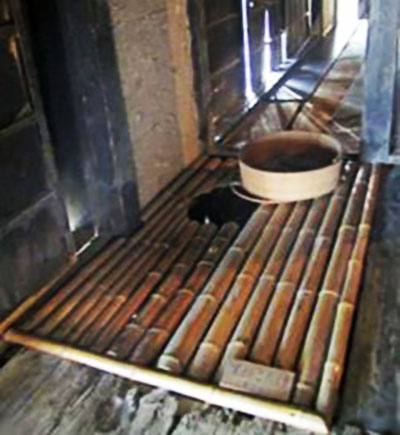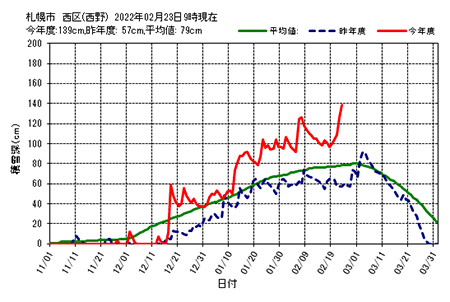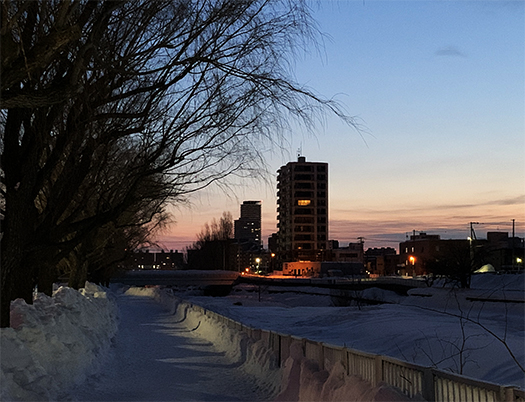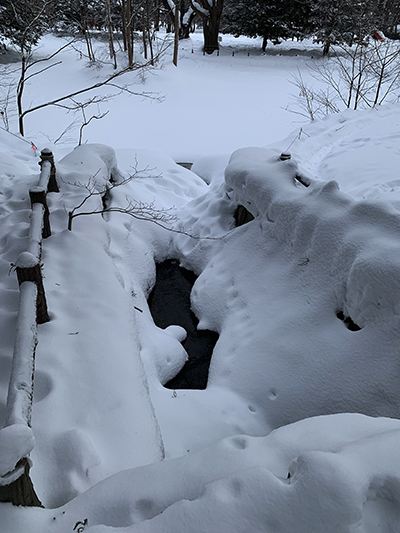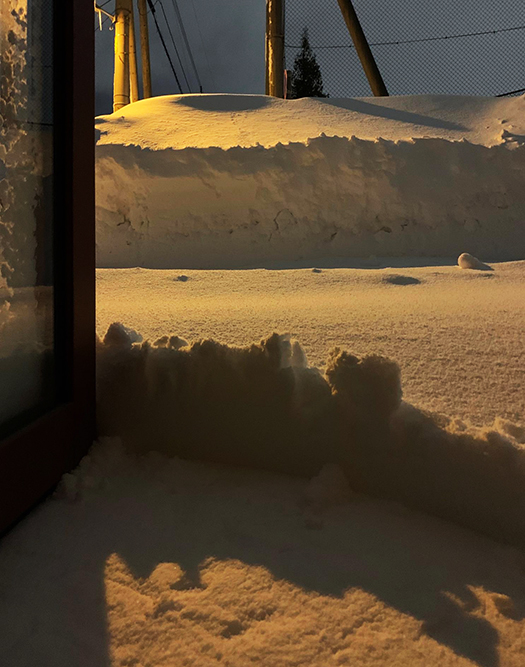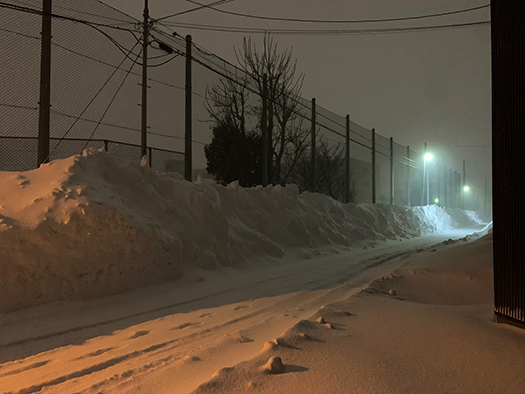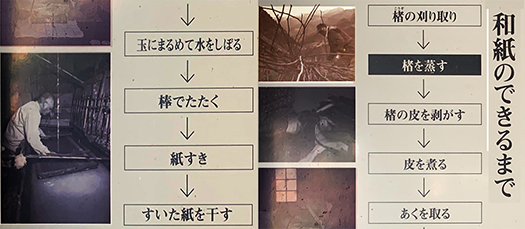

四国シリーズに復帰であります。
空海さんによる満濃池の平安初期の大土木工事など四国の北部・瀬戸内は
小雨傾向の印象が強いし、実際に多くの人造湖を見る。
そういう印象から四国全体として少雨傾向なのかと想像していたら
この高知の土蔵建築の説明でわたしの既成概念が覆されました。
年間降水量ランキングによると1位は高知県で3659mm、
2位は鹿児島県で2834mm、3位は宮崎県で2732mmだそうで、
そのなかでも高知はちょっと異常に数値が高い。
いずれも黒潮が中央構造線以南の山地にかかる地域。
多量の水蒸気が豊かな山林植生を創出している。
これまで見た山岳地域の平家落人住宅や木地師住宅など
森林に依存した生き方の表現でもあるのだと実感させられる。
高知はその最たる気候地域として台風降雨被害が頻出する地域。
同じ四国でも香川県は高松における最近30年(昭和56年~平成22年)の
年間平均降水量は1,082mmで梅雨期と台風期に集中。香川の降水量は
瀬戸内式気候の中でも少なく特に夏季は他県に比べて一段と降水量が少ない。
全国ランキングでは下から6番目だと言うこと。
で、新発見だけれど北海道はそこからまだ下なのだという。
冬期の積雪が豊かな水量で蓄えられ大地を潤してくれるので感覚的には
降水量は多いのではないかと思っていたけれど、けっこう乾燥した大地。
しかし高知と香川の隣接する県で降水量で3倍以上という違いに驚かされる。
満濃池は香川県ということで空海の時代から切実だったのでしょうね。
そういうはるかな「御恩」が八十八箇所として信仰心を高めたものか。
で、高知は一方で石灰岩の産出が多く漆喰は特産で技術レベルも高いという。
多雨で塗り壁の技術が高い、ということから土蔵建築には大きな発展条件。
この四国村移築の明治初期建築の「前田家土蔵」では
7寸(約21cm)厚の土壁の上に漆喰で仕上げられている。
壁面には3段の水切りが付いているけれど、
これは台風での横殴りの雨水が壁面を痛めつけることへの防御。
職人技術の高さを見ると同時に地域らしい気候対応を見せつけられる思い。
特徴的な屋根は「鞘屋根」といって二重になっている。
多雨気候対応と防火にも役立っている工法だということ。
建築はいかにも地域の気候風土のなかから生み出されるものだと、
強く印象に刻まれていく事例だと思いますね。
さて一方、ウクライナ危機。
きのう書いた対ロシアへの経済制裁に対して何を血迷ったのか、
プーチンは核兵器部隊に対して使用準備を加速するような命令を発したという。
どうもこの狂気の独裁者の精神状況に異変がある可能性がみえてくる。
常識では測りがたい、民主的国家意志決定システムでは考えられない行動。
落とし所の見えにくい危険水域を世界は彷徨っている・・・。
English version⬇
[Kochi’s heavy rain climate response “Dozo” Shikoku living space exploration-16]
It is a return to the Shikoku series.
In the northern part of Shikoku, Setouchi, such as the large civil engineering work of Mannoike in the early Heian period by Kukai
I have a strong impression of a light rain tendency, and I actually see many artificial lakes.
From such an impression, if you imagine that Shikoku as a whole tends to have a light rain
This explanation of Kochi’s dozo architecture overturned my preconceived notions.
According to the annual rainfall ranking, Kochi Prefecture is ranked first with 3659 mm.
The second place is Kagoshima prefecture with 2834 mm, and the third place is Miyazaki prefecture with 2732 mm.
Among them, Kochi has an unusually high number.
In both cases, the Kuroshio extends to the mountains south of the Median Tectonic Line.
A large amount of water vapor creates abundant forest vegetation.
Heike deceased houses and Kijiya houses in mountainous areas that I have seen so far
It makes me realize that it is also an expression of a way of life that depends on the forest.
Kochi is an area where typhoon rainfall damage occurs frequently as the most climatic area.
Even in the same Shikoku, Kagawa Prefecture has been in Takamatsu for the last 30 years (1981-2010).
The average annual rainfall is 1,082 mm, which is concentrated in the rainy season and typhoon season. Precipitation in Kagawa
It is the least in the Setouchi climate, and especially in summer, the amount of precipitation is much less than in other prefectures.
It is the sixth from the bottom in the national ranking.
So, although it is a new discovery, Hokkaido is still below that.
The snow in winter is stored in abundant water and moisturizes the earth, so it feels sensuous.
I thought there was a lot of rainfall, but the land was quite dry.
However, I am surprised at the difference in precipitation more than three times in the neighboring prefectures of Kochi and Kagawa.
Manno Pond is Kagawa prefecture, so it must have been urgent since the time of Kukai.
Is such a far-reaching “giving” raised the faith as 88 places?
On the other hand, Kochi produces a lot of limestone, and plaster is a specialty and has a high technical level.
It is a great development condition for dozo architecture because of the high technology of plaster walls due to heavy rain.
In the “Maeda family dozo” of the early Meiji period architecture of this Shikoku village relocation
It is finished with plaster on a 7 inch (about 21 cm) thick clay wall.
There are 3 drainers on the wall,
This is a defense against the damage of the wall surface caused by the rainwater hit by a typhoon.
At the same time as seeing the high level of craftsmanship, I feel that I can show off the climate response that is unique to the region.
The characteristic roof is called “sheath roof” and is doubled.
It is a construction method that is also useful for dealing with heavy rainfall and fire protection.
Architecture is created from the climate of the region.
I think this is an example that will make a strong impression.
On the other hand, the Ukrainian crisis.
What did you get lost in the economic sanctions against Russia that I wrote yesterday?
Putin is said to have issued an order to accelerate the preparation for use of the nuclear weapons unit.
It seems that there may be something wrong with the mental situation of this crazy dictator.
Behavior that is difficult to measure by common sense and is unthinkable in a democratic national decision-making system.
The world is wandering in dangerous waters where it is difficult to see the drop-off point.
Posted on 2月 28th, 2022 by 三木 奎吾
Filed under: 住宅マーケティング, 日本社会・文化研究 | No Comments »











